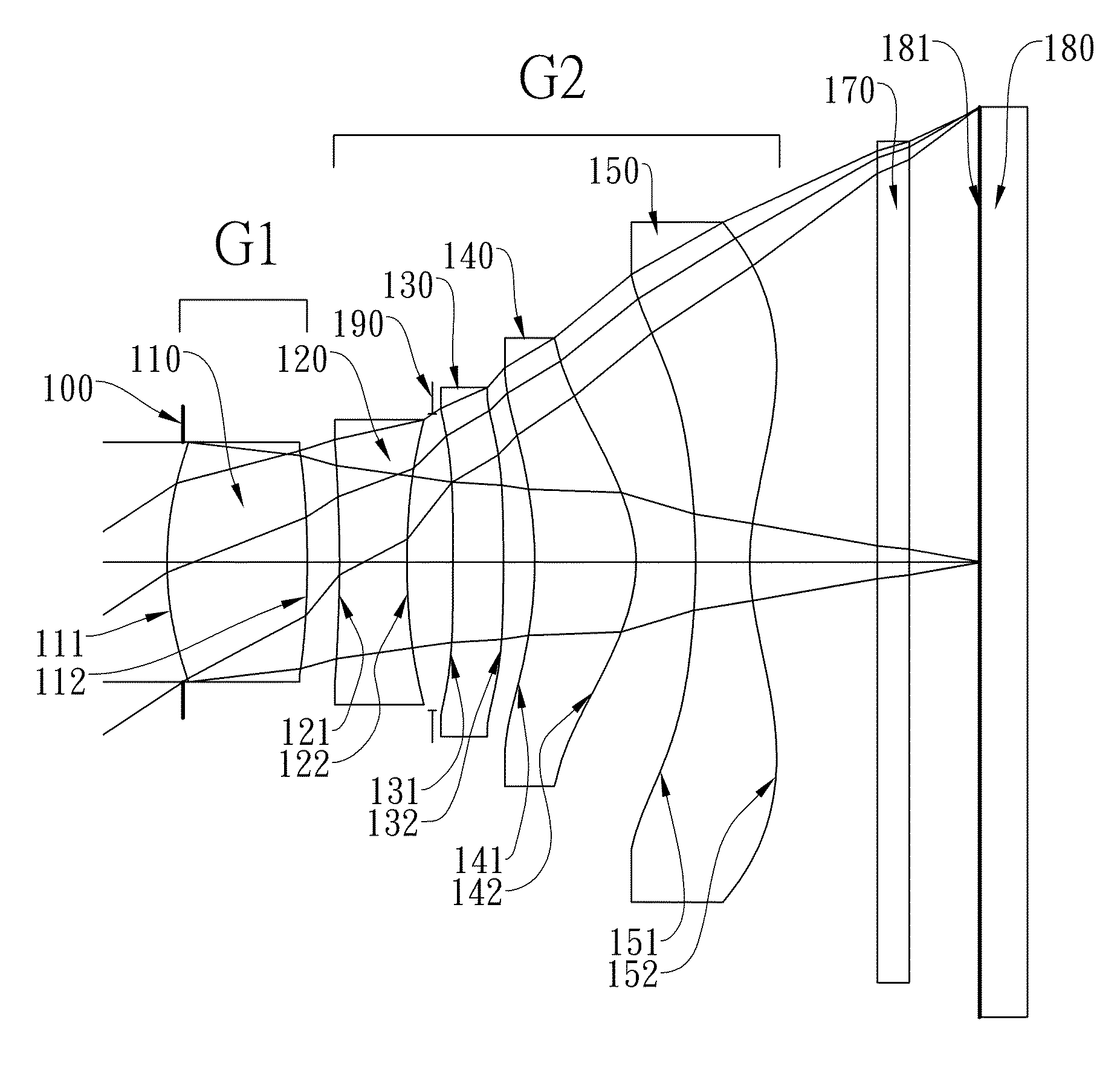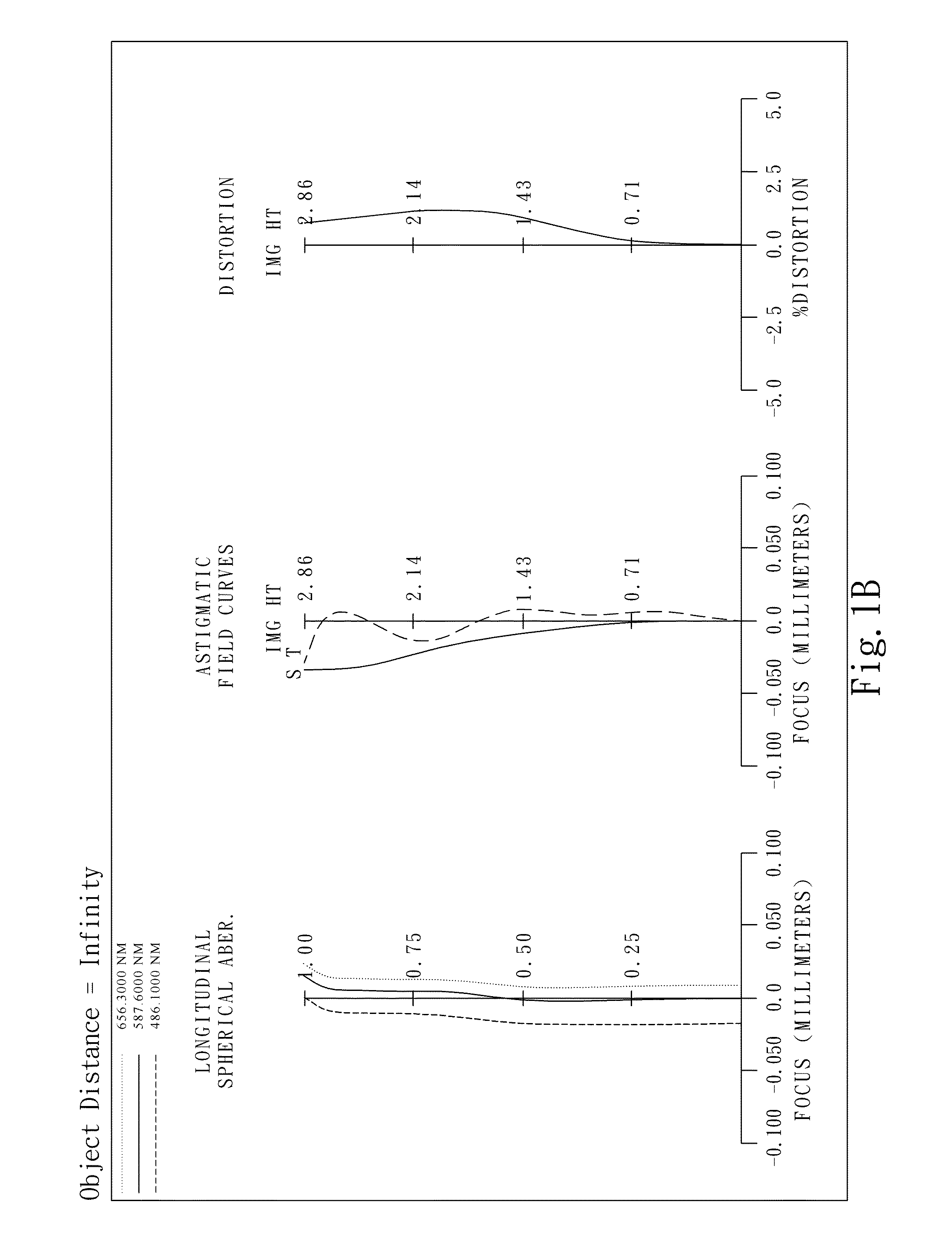Image capturing lens assembly
a technology of image capturing and lens assembly, which is applied in the field of image capturing lens assembly, can solve the problems of limited ability to correct aberration and chromatic aberration, prone inability to produce blurry images, so as to achieve excellent image quality, reduce power consumption, and improve image quality
- Summary
- Abstract
- Description
- Claims
- Application Information
AI Technical Summary
Benefits of technology
Problems solved by technology
Method used
Image
Examples
embodiment 1
[0072]FIG. 1A shows an image capturing lens assembly in accordance with the first embodiment of the present invention; meanwhile, FIG. 1B shows the aberration curves of the first embodiment as a distance between the lens assembly and an imaged object is infinite, and FIG. 1C shows the aberration curves as a distance between the lens assembly and the imaged object is 100 mm. The image capturing lens assembly of the first embodiment of the present invention mainly comprises five lens elements, in order from an object side to an image side:
[0073]a first lens group G1, comprising a first lens element 110 made of plastic with a positive refractive power having a convex object-side surface 111 and a convex image-side surface 112, the object-side and image-side surfaces 111 and 112 thereof being aspheric; and
[0074]a second lens group G2, comprising, in order from an object side to an image side:
[0075]a second lens element 120 made of plastic with a negative refractive power having a concav...
embodiment 2
[0105]FIG. 2A shows an image capturing lens assembly in accordance with the second embodiment of the present invention; meanwhile, FIG. 2B shows the aberration curves of the second embodiment as a distance between the lens assembly and an imaged object is infinite, and FIG. 2C shows the aberration curves as a distance between the lens assembly and the imaged object is 100 mm. The image capturing lens assembly of the second embodiment of the present invention mainly comprises five lens elements, in order from an object side to an image side:
[0106]a first lens group G1, comprising a first lens element 210 made of plastic with a positive refractive power having a convex object-side surface 211 and a concave image-side surface 212, the object-side and image-side surfaces 211 and 212 thereof being aspheric; and
[0107]a second lens group G2, comprising, in order from an object side to an image side:
[0108]a second lens element 220 made of plastic with a negative refractive power having a co...
embodiment 3
[0119]FIG. 3A shows an image capturing lens assembly in accordance with the third embodiment of the present invention; meanwhile, FIG. 3B shows the aberration curves of the third embodiment as a distance between the lens assembly and an imaged object is infinite, and FIG. 3C shows the aberration curves as a distance between the lens assembly and the imaged object is 100 mm. The image capturing lens assembly of the third embodiment of the present invention mainly comprises five lens elements, in order from an object side to an image side:
[0120]a first lens group G1, comprising a first lens element 310 made of plastic with a positive refractive power having a convex object-side surface 311 and a convex image-side surface 312, the object-side and image-side surfaces 311 and 312 thereof being aspheric; and
[0121]a second lens group G2, comprising, in order from an object side to an image side:
[0122]a second lens element 320 made of plastic with a negative refractive power having a convex...
PUM
 Login to View More
Login to View More Abstract
Description
Claims
Application Information
 Login to View More
Login to View More - R&D
- Intellectual Property
- Life Sciences
- Materials
- Tech Scout
- Unparalleled Data Quality
- Higher Quality Content
- 60% Fewer Hallucinations
Browse by: Latest US Patents, China's latest patents, Technical Efficacy Thesaurus, Application Domain, Technology Topic, Popular Technical Reports.
© 2025 PatSnap. All rights reserved.Legal|Privacy policy|Modern Slavery Act Transparency Statement|Sitemap|About US| Contact US: help@patsnap.com



